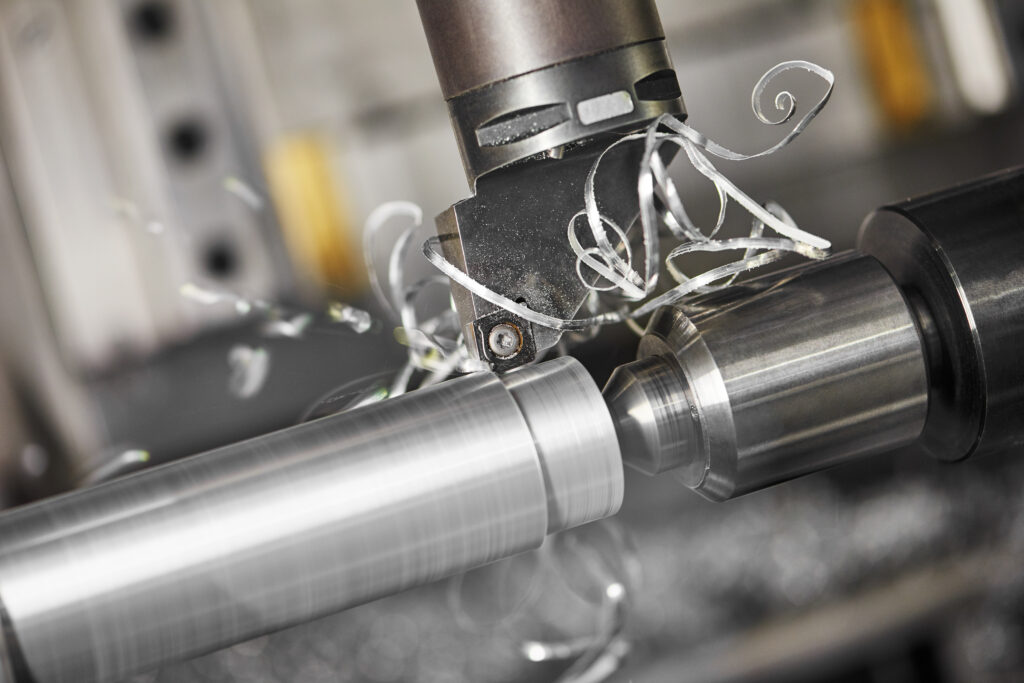Applications with metals and alloys
Metals used as materials must fulfill certain requirements depending on their intended use.
Only if properties such as hardnessstrength, thermal expansion, thermal conductivity or oxidation and corrosion behavior correspond to the conditions of use, maximum durability and a long service life can be guaranteed.
As this severely limits the usability of pure metals, they are often alloyed with other metals, semi-metals or non-metals.
Such mixed metals, also known as alloys, are characterized by improved material properties and therefore greatly expand the range of applications.
Physical measurement technology such as differential thermal analysisheating microscopy, differential calorimetry or the thermogravimetry make it possible to analyze the metallurgical behavior of iron, cast iron, steel and other metals and alloys with regard to the following or similar questions:
- How well does a metal conduct heat and/or electricity?
- How do certain temperatures affect a metal or alloy mechanically or chemically?
- How does the specific heat change with increasing temperature?
- At what temperature does oxidation of the metal surface occur?
- When is a metal alloy in phase equilibrium?
Phase transitionsthe crystallization pointThe crystallization point, the change of aggregate states and the thermal stability of starting materials for sheet metal, substrates and other metallurgical products can also be investigated using physical measurement methods. The same applies to specific heat capacities, linear expansion coefficients and the melting point.
LINSEIS develops and produces thermoanalytical measuring systems that can be used in many other sectors, including metallurgy. The most important fields of application include research, product development and quality testing.
Key materials in technology and industry
Alloys are metallic materials that play a central role in modern technology and industry. They are created by combining at least two elements, one of which is always a metal. By combining metals and non-metals, tailor-made materials with specific properties can be created that are indispensable for many applications. In addition to metals, non-metals also play a decisive role in the optimization of alloys.
Composition and production of alloys
Alloys are created by melting the components together at high temperatures. The components are mixed in liquid form and then cooled, creating a common metal lattice.
The cooling rate can have a decisive influence on the properties of the finished product. In addition to metals, non-metals or semi-metals such as carbon, boron or silicon can also be used as alloying elements, which can significantly influence the properties of the alloy.
Properties of alloys
Alloys often have more advantageous properties than their parent metals. The most important advantages that can be achieved through alloy formation include
- Increased hardness
- Improved strength
- Greater elasticity
- Higher corrosion resistance
These improved properties make alloys an indispensable component of numerous technical applications, particularly in the automotive industry, construction and electronics.
Types of alloys
Alloys are divided into homogeneous and heterogeneous alloys:
- Homogeneous alloys: Here, all atoms are evenly distributed in the lattice. Examples are copper-gold or copper-silver alloys. The individual components can no longer be distinguished from one another, even microscopically.
- Heterogeneous alloys: The components are unevenly distributed, no common atomic lattice is formed. This leads to the presence of microscopic or even macroscopic phases. An example of this is the tin-lead alloy.
Important alloys and their applications
Legierung | Hauptkomponenten | Verwendung |
|---|---|---|
| Bronze | Kupfer, Zinn | Kunstgegenstände, Werkzeuge |
| Messing | Kupfer, Zink | Elektronische Bauteile, Modeschmuck |
| Stahl | Eisen, Kohlenstoff | Maschinen, Autos, Schienen |
Influence of temperature on alloys
Temperatures have a considerable influence on the properties of alloys. Increasing temperatures lead to changes in the crystal structure and mechanical properties:
- Crystal structure and phases: At certain temperatures, phase transformations occur that influence the mechanical behavior of the alloy. These transformations can change the distribution and size of precipitates and phases within the alloy.
- Mechanical properties: Strength and hardness decrease with increasing temperature, while ductility and malleability increase. At very high temperatures creep can occur, a slow plastic deformation under constant load.
- Diffusion and atomic mobility: Higher temperatures increase atomic mobility, which promotes diffusion processes and reduces stresses in the material. This can lead to coarsening of the microstructure, which influences the mechanical properties of an alloy. Similarly, diffusion of foreign types of atoms, e.g. in physical contact with another component, can result in a mixed alloy when exposed to temperature, which usually leads to unforeseen changes in properties.

Temperature and melting behavior of alloys
The melting point of alloys is often lower than that of pure metals. This lowering of the melting point occurs due to lattice distortions and increased entropy in the liquid phase.
Entropy refers to the degree of disorder in a system. In the liquid phase of an alloy, there are more ways in which the different types of atoms can arrange themselves, which increases entropy.
This increase in disorder stabilizes the liquid phase and lowers the melting point of the alloy. The exact melting point depends on several factors:
- Composition: The proportion of alloying elements influences the melting point. For example, the melting point of steel varies between 1425°C and 1540°C depending on the carbon content.
- Alloying elements: Various additives influence the melting point. Chromium raises it, while nickel lowers it.
- Impurities: Impurities can lower the melting point of an alloy as they disrupt the lattice structure.
In addition, temperature changes influence the melting behavior of alloys through phase transformations or the occurrence of superplasticity, which significantly increases formability at high temperatures.
The role of non-metals in alloys
Despite their lower proportion in alloys, non-metals are indispensable as they make a decisive contribution to improving the material properties:
- Carbon: An essential component of steel alloys that significantly influences hardness and strength. The mechanical properties of steel differ significantly depending on the carbon content.
- Silicon: Often used as an additive in aluminum alloys to improve castability. The aluminum-silicon alloy (silumin) is used in the automotive industry for cast parts.
- Boron: Even in small quantities, boron has a major effect on the mechanical properties of alloys by increasing their hardness.
Commonly used non-metals in the automotive industry
Non-metals are playing an increasingly important role in the automotive industry, particularly in the areas of lightweight construction, battery technology and electronics. Frequently used non-metals in the industry are:
- Carbon: In the form of carbon fibers, it is increasingly being used for lightweight components to reduce vehicle weight and increase efficiency. Carbon is also contained in steel alloys, which are used for body and structural parts.
- Silicon: Silicon is used in aluminum alloys, particularly for cast parts in automotive engineering. It is also a key component of vehicle electronics, as it is used in semiconductors and microchips.
- Sulphur: Sulphur is used in rubber compounds that are used in the manufacture of car tires.
- Platinum and palladium: These non-metals are used in catalytic converters to reduce harmful emissions. They are crucial for compliance with environmental standards and play an important role in the fuel cell technology of hydrogen vehicles.
- Boron: Boron is used as an alloying element for hardening steel and is used in high-strength components.
Technical applications of non-metals in the automotive industry
The following components in particular are dominated by non-metals:
- Catalysts: Non-metals such as platinum and palladium are essential components in catalytic converters that reduce harmful emissions. These materials help to meet strict environmental regulations and play an important role in improving air quality.
- Fuel cells: Hydrogen fuel cell vehicles usually have complex membranes and electrodes made of platinum or carbon, for example. These technologies are becoming increasingly important as alternative drive technologies are further developed.
- Electronics and sensors: Semiconductor non-metals such as silicon are indispensable for the electronics and sensors in modern vehicles, which are becoming increasingly automated.
- Battery technology: Non-metals such as graphite play a key role in the development of modern battery technologies for electric vehicles. These materials significantly improve the performance and service life of batteries.
- Corrosion protection: Non-metallic coatings and additives protect metallic components against corrosion and thus extend their service life, especially in aggressive environmental conditions.
- Composite materials: In the automotive industry, metallic and non-metallic materials are often combined to produce composite materials that combine high strength with low weight.
New developments in alloys and non-metals
The further development of technology is also accompanied by innovations in the field of alloys and non-metals. One example of this is high-strength lightweight alloys, such as titanium-aluminum or magnesium alloys, which are used in aerospace and automotive engineering due to their high strength and lightness.
Amorphous metals, also known as metallic glasses, are another innovation. These novel alloys have an irregular atomic arrangement and are characterized by exceptional strength and formability. They offer potential applications in high technology and medical technology.
Green alloys are also gaining in importance. These are environmentally friendly alloys made from sustainable raw materials or produced using more energy-efficient processes to minimize environmental impact.
Recycling and sustainability
The recyclability of alloys and non-metals is playing an increasingly important role, especially in industries such as the automotive and aerospace sectors.
There is a growing focus on the concept of the circular economy to reuse materials such as aluminum and steel and reduce the environmental impact.
In addition, greater attention is being paid to the use of sustainable raw material sources to ensure that critical metals such as lithium or platinum come from conflict-free and environmentally friendly sources.
Additive manufacturing (3D printing) in metallurgy
A significant advance in the processing of alloys is additive manufacturing, also known as 3D printing. This technology enables the production of complex structures directly from alloy powders, which is increasingly being used in both the automotive and aerospace industries. By using powder metallurgy, alloys with specific properties can be produced in a targeted manner. Another innovative potential is the development of personalized alloys that are tailored to the requirements of specific applications.
Future forecasts
The use of alloys and non-metals will continue to grow in importance over the coming decades. The importance of these materials will increase, particularly in areas such as electromobility and the hydrogen economy.
Lightweight alloys and advanced battery technologies play a key role in the further development of electric vehicles.
In addition, the demand for platinum in fuel cell technology will increase as hydrogen gains in importance as an alternative energy source.
Conclusion
Alloys and non-metals are essential components of modern technology and industry. They offer tailor-made solutions for a wide range of applications, particularly in the automotive industry, where they help to increase efficiency and comply with environmental standards.
Controlling temperature and composition is crucial to achieving the desired properties of these materials and further optimizing their potential applications. In addition, ongoing research and innovation will further increase the use of alloys and non-metals in new areas, particularly with regard to sustainability and new manufacturing technologies such as 3D printing.

